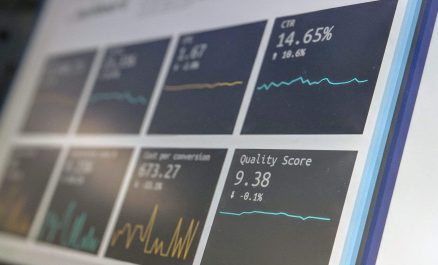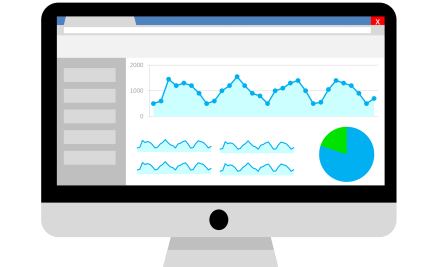In this article we want to zoom in especially on the combination productivity – Process Mining. In what concrete ways can Process Mining boost the productivity of your organization and employees? And what are the sub-elements of your operations within which you can use Process Mining? We’ll tell you.
Process Mining is a technology and methodology that offers organizations great opportunities to improve processes. In a previous article, we saw that Process Mining can make a positive contribution to planning and executing an organization’s finance processes in four primary areas: working capital, risk (management), compliance and reporting and productivity.
Working data-driven with Process Mining
Valuable process information is often locked away in systems. Consequently, many organizations are sitting on a gold mine of information without immediately realizing it. Process Mining is a technique that helps you unlock that data and analyze and improve processes within an organization based on hard data. Using special software, you analyze logs that record actions taken by employees and systems. For example, consider the duration of a particular action or the different steps an employee or department goes through when performing a process.
Process Mining harnesses the power of automation and modern (often AI-equipped) analytics tools to examine the digital footprints left by activities within your organization. In terms of productivity, Process Mining can help you, among other things:
- identifying bottlenecks and exceptions within processes;
- Review lead times per process step;
- Monitor workloads;
- mapping the complexity of processes.

Improving productivity with Process Mining: the possibilities
You can break down the impact of Process Mining on productivity into a number of sub-elements. Time to take a look at the different dimensions of productivity within which a good Process Mining strategy can make a positive difference.
Process Automation
Process automation is definitely a hot topic in modern business. Yet in practice, automation far from always turns into a success. The reason? Many organizations struggle to identify exactly which processes and process steps lend themselves best to far-reaching automation. Bill Gates once aptly expressed what happens when you start automating a process overview at random and without a good plan: “The first rule of any technology used in a business is that automation applied to an efficient operation will magnify the efficiency. The second is that automation applied to an inefficient operation will magnify the inefficiency.”
Process Mining helps you apply process automation efficiently. That’s because it gives you the operational data you need about processes before you actually start automating. The advantage of this approach? You get more insight in advance into which processes do or do not lend themselves to automation.
This creates a strong business case and ensures that process automation actually serves to improve financial (getting more done at the same or lower cost) and operational productivity. Thus Process Mining becomes an important building block for hyperautomation. By this we mean the end-to-end automation of processes by combining technologies such as RPA and AI.
Easier processes and reduced errors
Process Mining also helps simplify processes and reduce the error burden. Important, because too much complexity and having to fix errors afterwards are a drag on productivity. With Process Mining you get a clear picture of current processes and the deviations and variations within those processes.
You can use existing, actual and factual data to determine the necessary steps within a process and which deviations and variations cause the most unnecessary steps. You put the existing process next to the ideal process, so to speak. The ideal picture then acts as a mirror and blueprint that you can use to remove unnecessary actions and replace error-prone, often manually performed actions with automated process steps.
Make syrupy processes insightful, efficient and transparent
Many organizations struggle with viscous processes. Think, for example, of a path between planning and execution that is littered with meetings that produce nothing, forms to be approved that drift around for too long in a business limbo between different departments and large amounts of e-mails to achieve mutual coordination. Employees are often too close to the actions and their part of the work to oversee the entire process.
Process Mining maps all unnecessary steps that (can) hinder the financial and operative productivity of processes. How do the routes run? Where are the moments and actions that cause delays or lack of transparency? With Process Mining, you find out and make processes more efficient, insightful and less syrupy.
Insight and monitoring of workloads
Workloads are sometimes unpredictable and can vary from period to period. For example, many online retailers experience a peak period during the holidays, while campgrounds and outdoor stores are more likely to experience crowds in the spring and summer. With Process Mining, you map workloads using hard and recurring data and get answers to important questions such as:
- When do peak periods occur?
- Do those peak periods recur continuously at the same times? Or do they include changing workloads at unexpected times?
- Do I have the resources, technology and manpower to handle variations and peaks in workloads?
- What tools, financial resources and manpower do I need at what time?
By understanding and monitoring workloads, you can design your processes to ensure optimal financial and operational productivity regardless of the number of workloads.

Making better use of your workforce
Process Mining also helps you get more out of your workforce. Do employees have all the tools they need to perform their tasks in the most efficient and best possible way? And are people not hindered in their productivity because there is a kink elsewhere in the process?
Think, for example, of someone who has final responsibility for providing loans, but has to wait (too) long for the documents because the turnaround time in other departments and employees is slow due to an excess of manual actions. With Process Mining, you track down these types of bottlenecks and can address them effectively.
Streamline processes and tasks
A major disruptor in the area of (financial) productivity is that employees within an organization often perform the same tasks in different ways. If everyone uses different routines for similar tasks, it often has a negative impact on the final output.
With Process Mining you can map those differences in working methods and standardize processes and tasks. This provides greater clarity, efficiency and measurability, a combination that positively impacts your organization’s financial and operational productivity. With task mining, you can even dissect and standardize a workflow or task down to the level of each individual step.
Want to know more?
As you can see, improving (financial productivity) gets a lot easier when you harness the power of Process Mining. At Deep Value, we know the power of Process Mining and use it to quickly realize operational efficiencies and better process knowledge for your organization.
Curious about what we can do for your organization? Please feel free to contact us without obligation by calling +31 (0) 30 209 92 70 or emailing info@deepvalue.nl. You can also fill out the contact form on our website.




Leave a Reply